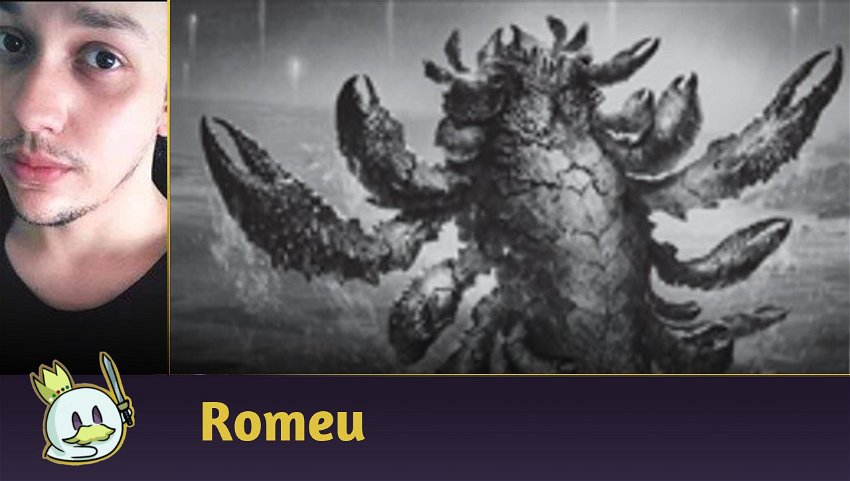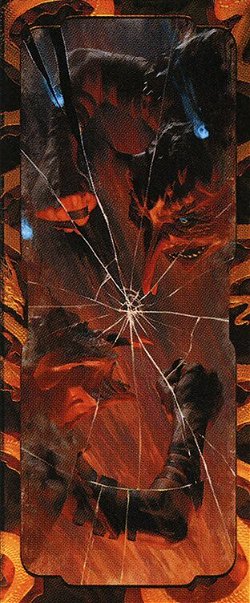One of the most interesting points of last weekend's events was the complete absence of Izzet Phoenix in the Top 8 of both Weekend's Challenges, and the emergence of decks that were relatively low in the Top 32, or even new strategies and archetypes cropping up in the events.
Among these archetypes, and one that is also found in the Izzet combination, was an archetype that got two spots in the Top 8 of Saturday's Pioneer Challenge, with a well-known strategy in Standard: Izzet Control.
So today I'll be analyzing how the archetype behaves, and what are its advantages and disadvantages compared to the format's Metagame, the directions that the deck can take, and what else we can expect from Pioneer in the future.
Understanding the Izzet Control
Both lists are very similar, but with only a few minor differences on the Sideboard (with the inclusion of Mazemind Tome deserving an honorable mention as it adds another card advantage element to attrition matchups), but Izzet Control works essentially the same base as the archetype uses in Standard, but with additions and adaptations for Pioneer's Metagame.

The combination of Temporal Trespass with Galvanic Iteration is what makes the archetype highly viable, alongside its wincondition which we'll mention shortly.
The combination of Extra Turn + Copy Effect has been well known in Magic: The Gathering for over a decade, and Alrund's Epiphany brought this up again with the Izzet Epiphany deck, which even opened discussions about whether the card should be banned from Standard.
In Pioneer, Alrund's Epiphany is a relatively slow card, but Izzet Phoenix players found a way to create a “combo” capable of winning the game through Temporal Trespass, which can be cast for three mana, while, if copied with Galvanic Iteration, offers two spells for the streak needed to return Arclight Phoenix from the graveyard to the battlefield, or to transform Thing in the Ice, making it a lethal combination in the archetype.
However, the combination of Extra Turn + Copy is only as good as the advantage you can establish with them. Time Warp and Twincast were together in the same Standard, and didn't do anything relevant, but Alrund's Epiphany is much more powerful than Time Warp because in addition to the extra turn, it adds two tokens that can establish some pressure.
As for Izzet Phoenix, their "birds" are 3/2 creatures with Haste.

In this deck, we establish the advantage with Chandra, Torch of Defiance, which serves multiple purposes in this archetype, while also functioning as a wincondition if you're in the game long enough.
In addition, we can also take advantage of an extra turn combo with an empty board to perform Hall of Storm Giants activations, which works as a wincondition on its own and sets some difficulty for an inattentive opponent to interact with.

What about the new addition of Innistrad: Crimson Vow that has been establishing how Control decks should play in Standard?
Hullbreaker Horror is one of the most powerful finishers for Control decks in Pioneer as well: Besides being a tough threat to respond with damage-based removals (commonly used by Izzet Phoenix, Boros Burn, among others) and dodging other removals, like Fatal Push. The creature can't be countered, and the moment you untap with it, your opponent will hardly have any opportunity to answer it, as all your spells automatically come with an Unsubstantiate attached to it, which serves both to protect you or your permanents, and to remove the opponent's relevant threats one by one, creating a streak of “pseudo extra turns”, as you can return anything to the opponent's hand after he casts it, including things he'll have difficulty re-enabling, like Thing in the Ice or Arclight Phoenix, or even Kroxa, Titan of Death's Hunger.
Hullbreaker Horror is also another lethal threat with Temporal Trespass + Galvanic Iteration, as it will commonly remove blockers from the path, and manages to deal a total of 21 damage over the three turns.
A point that less experienced players are usually unaware of, and that I would like to emphasize in this article, is that there are two Control categories.
The most common version of the archetype we see, with counterspells, sweepers, and other effects that seek to prolong the game long enough to deplete the opponent's resources and, from that moment on, start playing your bombs sequentially, is commonly called Draw-Go.
The other category is Tapout, where the objective is to use your resources in a reactive way, but long enough to be able to cast a spell or combination capable of quickly winning the game, while using means to speed up the game's explosive plays without abdicating control of the game.
Izzet Control, interestingly, fits into both categories: A vast majority of the deck fits into Instant-Speed interactions, where the archetype essentially reacts to whatever the opponent plays against it, while some of its cards are intended to speed up its resources so that the spells and permanents that will win the game are on the board faster than planned.

And to speed up the cast of our spell that will win the game, we have Unexpected Windfall, which is also very useful in speeding up Temporal Trespass or another spell with Delve, like Dig Through Time, serving basically as a great engine for everything the archetype sets out to do.
So, the deck's plan essentially involves controlling the game the first few turns with removals and carving your hand with cantrips until you have the resources and enough mana to cast Hullbreaker Horror and take over the game.
Another essential point on this list is that many of the cards it runs are cheap responses to comprehensive threats, which increases the quality with which the deck can efficiently handle opponents' plays, while also taking better advantage of its cantrips.
Maindeck


We've already been duly introduced to the deck's winconditions core and accelerators, as well as the extra turn combo that the archetype features, so how exactly can this card combination work if it weren't for the rest of the deck's core, which features some of the best options Izzet archetypes have?

The deck's cantrip package includes some of the best cards available in the format today, with Consider serving as an efficient means of filling your graveyard for your Delve spells, and Expressive Iteration being one of the most powerful spells printed in the last years.
It's important to note that we try to use as little mana as possible to make as many spells as possible, just as we do with Izzet Phoenix, but especially because we need to have a certain level of flexibility with our spells for Hullbreaker Horror's triggers.

We want our interactions to be as cheap as possible, but since we've established ourselves as a Control archetype, we can lift the curve a bit and play with spells like Mizzium Mortars, which can be used to deal with virtually any popular threat, in particular Winota, Joiner of Forces, while it can also become a sweeper at later turns, being possible to use it even on turn 5, thanks to Unexpected Windfall and Chandra, Torch of Defiance.
Fiery Impulse and Flame-Blessed Bolt are good at dealing with smaller creatures for one mana, while Fading Hope is very useful at resolving threats that have some considerable power boost, or with cards that are disadvantageous to returning to the hand, such as Kroxa, Titan of Death's Hunger, Thing in the Ice, or Arclight Phoenix.
Finally, Anger of the Gods is still the best low-cost sweeper for a format geared towards archetypes that try to play “under” with impacting creatures, or graveyard interactions.

Finally, Dig Through Time is a very relevant option to look for the exact cards the deck needs (which is very relevant since we use three copies of Hullbreaker Horror), and particularly I would consider adding one more copy, especially since we have Thrill of Possibility to discard useless cards and draw more cards.

In addition to the manlands, we also use a mana base that looks for the maximum amount of untapped lands throughout the game, something essential for an archetype that needs to have the right numbers of mana each turn in order not to delay its own plan.
Sideboard

To be quite honest, I'm surprised that the deck only runs one copy of Grafdigger's Cage, as we essentially don't take penalties for its effects and this artifact alone manages to delay three of the format's best decks: Izzet Phoenix, Naya Winota and Rakdos Arcanist.

Speaking of delaying games, Thing in the Ice is very useful in holding back aggressive decks, while being transformed can make a significant difference in both dealing with the opponent's board and speeding up your clock, thus giving so many turns to its controller, which will usually give enough time for Hullbreaker Horror to dominate the game.

Efficient color-specific answers have become increasingly needed in Pioneer, with Aether Gust being very useful against Burn, Rakdos Arcanist and the occasional Golgari or Gruul decks that commonly come up, and Rending Volley being very useful in dealing with Thing in the Ice and Humans, while both also respond very well to Winota, Joiner of Forces.

Cinderclasm is a cheap sweeper that, for a low mana cost, can handle several creatures played by Humans, in addition to several mana dorks used by Naya Winota, while, by paying its additional cost, this sweeper becomes still more comprehensive, and can clear the board against weenie decks.

Like Izzet Phoenix, we also run a package of reactive spells to deal with the many situations where we are pitted against blue decks, especially Control like Azorius or Dimir, but these cards are also significantly useful against other archetypes like Bant Spirits, in the case of Mystical Dispute, and Lotus Combo, where Negate can handle a significant amount of spells the opponent needs to play.

Last but not least, we have Jace, Wielder of Mysteries as a very useful card to play on grindy games, which can serve as an alternative wincondition, or even punish opponents who put too many cards into the graveyard during the course of the match.
Deck Analysis
I've tested this list on a few tabletop games, and I can tell that the results were relatively pretty interesting.
Izzet Control, like Izzet Drake, which I mentioned in another article, has as its main advantage that many decks are looking to target Izzet Phoenix with specific cards to deal with the archetype, such as Go Blank, and its strategy dodges significantly well on these cards, though it's still somewhat problematic when its focus includes using Temporal Trespass.
In addition, Izzet Control deals with aggressive archetypes at ease, as it can devote less resources to needing to perform a sequence of spells, being able to dedicate its removals more efficiently to then establish the advantage with Chandra or with Hullbreaker Horror.
On the other hand, it needs a lot more time to close the game, and has serious difficulties against archetypes that can play under while protecting their creatures well, or when the opponent's creatures are outside the zone where their removals operate, and it still has more difficulties in dealing with decks like Burn, as it offers too much time for the opponent to find a streak of direct damage spells, which will never be countered because it has no means to do so.
The other weakness this deck has is against Thoughtseize-based decks, namely Rakdos Arcanist, and besides having a good topdeck to answer most of their threats, these games tend to go between those where you can cast and protect Hullbreaker Horror, and those where you never find it or doesn't have enough resources to cast it.
That said, I truly believe the archetype is very well-prepared and positioned to handle the current Metagame, but I do question how useful the Izzet colors actually becomes when compared to others in an open field with fewer established decks.
Another point to consider is that Izzet colors is great at dealing with creature-based decks, but it doesn't have the same flexibility to play Control Mirrors, as it has less comprehensive and efficient ways to play against Planeswalkers, or creatures that are difficult to deal with, and our disruptions tends to be a bit worse as well.
Alternate Card Choices

The first point that comes to mind is that this deck really could use a few more copies of Thing in the Ice, both as a way to better hold the aggressive decks and buy enough time to turn the game around, as well as another wincondition for a list that can suffer significantly from the lack of means of establishing victory after controlling the game.
Also, Hullbreaker Horror interacts well with Thing in the Ice as it doesn't get returned to the hand after the transformation, which is also an important point to consider when playing against this deck.

Another card that could occasionally add some versatility, especially in an archetype where our goal is to delay the opponent's play long enough, is Unsubstantiate, which can temporarily deal with some creatures, while it can also return some specific spell to the opponent's hand, including cards that cannot be countered, such as Dovin's Veto.
Conclusion
That was my Izzet Control deck tech, an interesting archetype that made some results throughout this week,
This week, we've seen a complete absence of two of the format's top decks on the Challenges' Top 8. Meanwhile, other new archetypes have emerged and managed to do well, both in the Top 8 and Top 32, and as far as Izzet Control is concerned, it seems to have the potential to stay as one of the format's competitors, as we've seen with its recurrent League results throughout the week.
The question that remains, however, whether the archetype will be able to stay in the format after the Metagame adapts to its inclusion and whether, in the event of a change among the format's best decks, the Izzet combination will still be the most efficient as a Control deck with Hullbreaker Horror, and whether the combination of Temporal Trespass with Galvanic Iteration will suffice on its own.
Until then, let's keep track of how the new decks will perform in the next Challenges.
Thanks for reading!














— Comments 0
, Reactions 1
Be the first to comment